Domnev
The information in this page is updated in accordance with 00.07.03.4 firmware version .
Introduction
This article contains instructions on how to set up BACnet on Teltonika Networks devices.
Configuration overview and prerequisites
Before we begin, let's take a look at the configuration that we are attempting to achieve and the prerequisites that make it possible.
Prerequisites:
- Two RUT955;
- BACnet controller;
- Server;
- An end device (PC, Laptop) for configuration;
If you're having trouble finding any page or some of the parameters described here on your device's WebUI, you should turn on "Advanced WebUI" mode. You can do that by clicking the "Basic" button under "Mode," which is located at the top-right corner of the WebUI.

Note: This is additional software that can be installed from the Services → Package Manager page.
BACnet/IP configuration
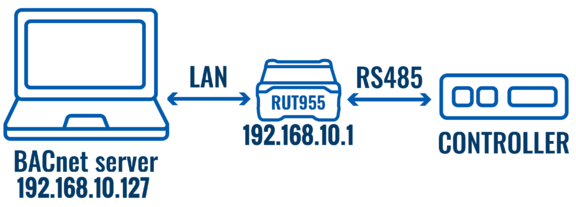
The controller is directly connected to RUT955 via RS485. Router forward the data from the controller to the BACnet server to the PC.
BACnet
Install the BACnet package on RUT955 and navigate to Services → BACnet and enable the instance. Everything else can be left as is or changed to suit your needs.

Server
For the server, Yet Another BACnet Explorer (YABE) is used. YABE is an open-source BACnet Explorer that is designed to be lightweight, fast, and easy to use.
Open the software and click on the green plus sign to add a new device. Then a new window will pop up; there, select the local endpoint IP address and click Start. Everything else can be left as is or changed to suit your needs.

Select the newly created communication node and right-click on it to send WhoIs request (application might send these automatically).
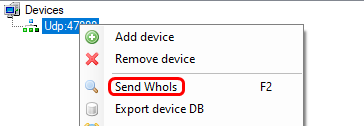
Results
In cases of success, you see the connected BACnet device and its parameters.
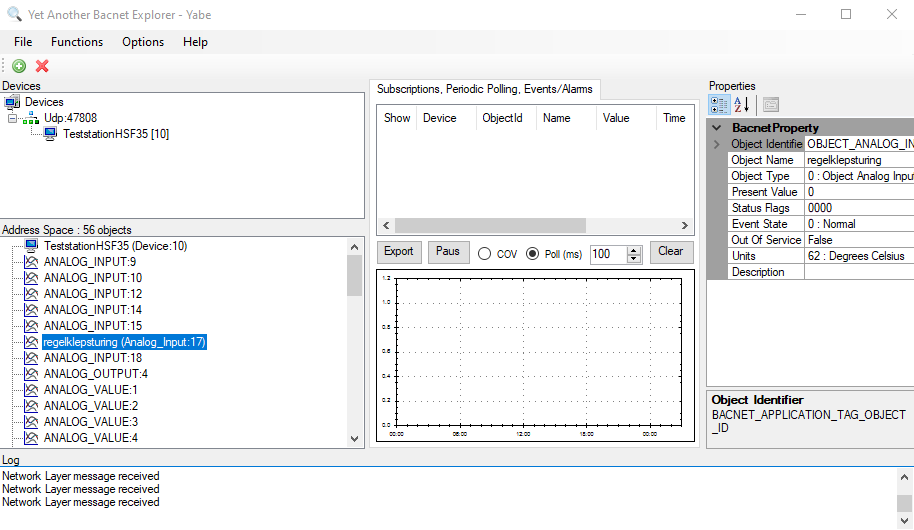
BACnet/IP via LTE configuration
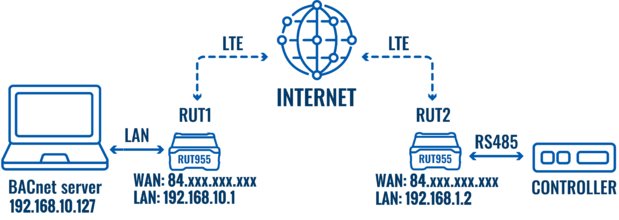
In this topology, there is two RUT955 routers - RUT1 and RUT2. RUT1 is connected to the server via LAN and the RUT2 is connected to the controller via RS485. RUT2 sends data to the RUT1 which forwards it to the BACnet server.
For this configuration, you must have a public IP address. You can read more on this in our article on Private and Public IP Addresses.
Router 1
BACnet
Install the BACnet package on RUT1, then go to Services → BACnet and enable the instance. Everything else can be left as is or changed to suit your needs.

Firewall
The configuration will also require you to add a port-forward rule to the firewall configuration. To do that, open RouUT1ebUI and navigate to Network → Firewall → Port Forwards. Create a port forward rule to forward UDP packets from RUT2 WAN to the RUT1 LAN address port.
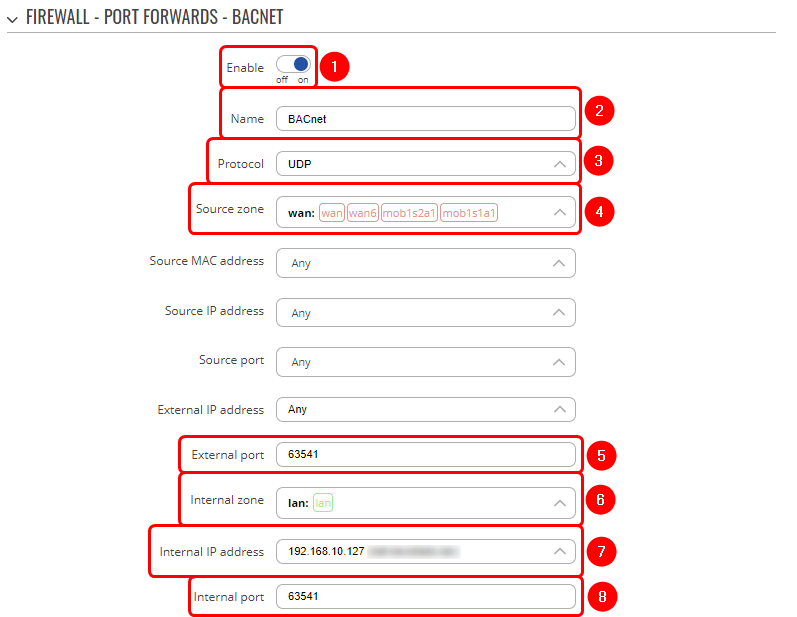
- Enable instance
- Name - enter desired name
- Protocol - UDP
- Source zone - WAN
- External port - YABE port
- Internal zone - LAN
- Internal IP address - PC LAN IP
- Internal port - YABE port
Note: When YABE sends registration packets you will need to find out which port YABE is using (One way is to look through the traffic with wireshark on your PC or TCP dump on RUT1 or RUT2)
If you restart the YABE software or delete and recreate a new communication device, YABE may use a different port number, in which case you must change the port forward configuration in the router connected to your PC.
Router 2
BACnet
Navigate to Services → BACnet, there:
- Enable BACnet
- Enable BBMD
- BBMD interface - select the interface with Public IP.
- Enable Port forward - this will automatically create a port forward rule.
Everything else can be left as default or changed according to your needs.
Firewall
If you would like manually creating a port forward rule, navigate to Network → Firewall → Port Forwards.
- Enable instance
- Name - enter desired name
- Protocol - UDP
- Source zone - WAN
- External port - 47808
- Internal zone - LAN
- Internal IP address - Router LAN IP
- Internal port - 47808
Server
Open the software and click on the green plus sign to add a new device. Then a new window will pop up, there select local endpoint IP address and click start. Everything else cane be left as default or changed according to your needs.

Then select the node and go to Meniu → Functions → IP services → Foreign device registration and enter public IP address of Router2 (the one connected to controller).
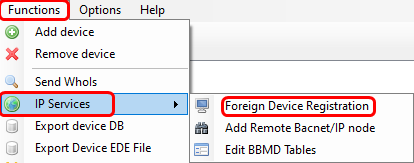
Results
In case of success you see the device connected via gateway.
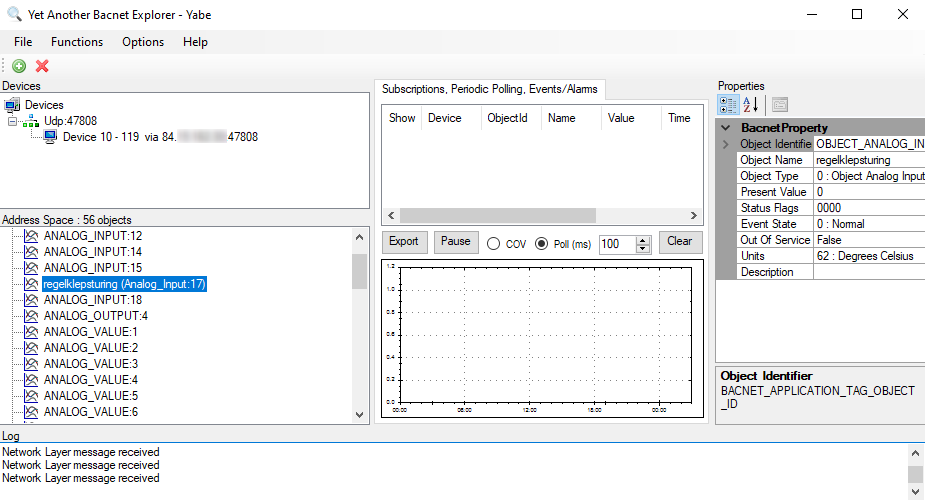
See also
BACnet on RUT955
Port-forward on RUT955
